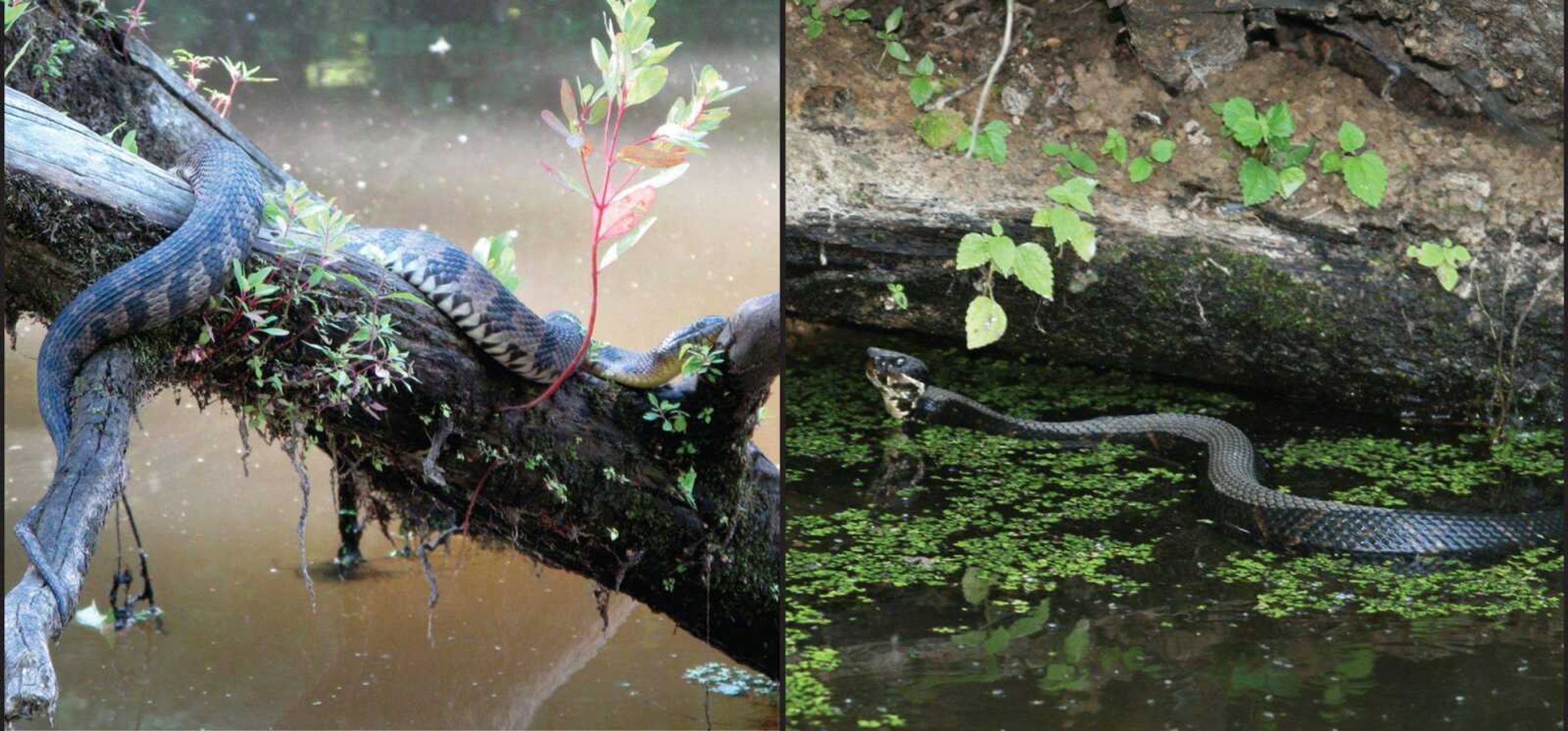This column originally appeared as a Discover Nature blog on semissourian.com/blogs.
Seeing a snake in the wild is an exhilarating experience. For some, it may be a little too much of an adventure. But knowing how to identify snake species and knowing how to respect wildlife are valuable tools.
A wild snake, like any wild animal, is unpredictable and can be dangerous if it feels threatened. On a recent canoe trip through a section of the Mingo National Wildlife Refuge, I had the chance to not only identify two snakes but also to show them respect on their own turf.
To the untrained eye, the two didn't look much different. But if you know what to look for, you would see that one of these snakes is venomous, one is not.
The first encounter was with a lazy, large snake with dark bands on its back that seemed to be linked like a chain. It had a dull yellow belly that had some irregular dark brown spots. Our canoe nearly bumped the log the snake rested on and it didn't even glance over to see who the offender might be. We maneuvered around the log -- with my camera snapping along trying to get a good picture without disturbing his nap.
The second snake we saw was not at all lazy. It must've seen us coming because it was racing along the top of the water toward the bank. The snake barely seemed to move its body at all as it skimmed easily across the swamp to avoid visiting with us. When it reached a log that stuck out from the bank, the snake slithered alongside it, as if hoping to blend in with it. Just as we passed by, it reached the corner of the bank and turned to face us to make sure we weren't coming any closer. I got the message: It was prepared to stand its ground if we encroached further on its territory. So, of course, we didn't.
This serious fellow had the same dark black color as the first, but its back was nearly solid black with just a few small olive brown markings. The creamy white color along its mouth and chin was a dead giveaway that it was a Western cottonmouth.
It was also easy to identify from behind, because its head was dramatically wider than his back. That triangular snakehead is a sure sign of a venomous snake. If a snake's nose comes to a point, that doesn't mean his head is triangularly shaped. A venomous snake will not only have a pointy nose, but its jaw line will jut out from the rest of the body making its head shape an easily recognizable triangle.
Venomous snakes can also be identified by the elliptical shape of the pupils, but this is a better tool when identifying from a photo -- not in a live situation.
The trip wasn't over when we left the refuge. I was eager to take my photos and compare them against Tom Johnson's guidebook "The Amphibians and Reptiles of Missouri." The first large, lazy sleeper was a diamond-backed water snake, which the book says is Missouri's largest species of water snake. These snakes range from 30 to 48 inches in our state, although the record length for this species is 63 inches (Conant and Collins, 1991). Johnson notes that this snake could be misidentified as the Western cottonmouth, but knowing to look for that chainlike dark pattern on the back will help in identification.
The diamond-backed water snake eats fish, especially slow-moving or dead fish, frogs, toads and salamanders. The Western cottonmouth is primarily a fish-eater but also eats frogs, other snakes, lizards and rodents.
Though our first reaction could be to scream or be afraid of these snakes, knowing to identify them and, most importantly, knowing to give them their own space and respect in their home territory is key to enjoying a day in the wild without unnecessary fear.
Candice Davis is the media specialist for the Missouri Department of Conservations Southeast and Ozark regions. Though raised to appreciate the Missouri outdoors, Candice is discovering nature on a new and exciting level as she gets up close and personal with snakes, insects and Southeast Missouris diverse landscape. Her goal is to share her learning experiences and show Southeast Missourians how they're directly connected to their land.
Connect with the Southeast Missourian Newsroom:
For corrections to this story or other insights for the editor, click here. To submit a letter to the editor, click here. To learn about the Southeast Missourian’s AI Policy, click here.








